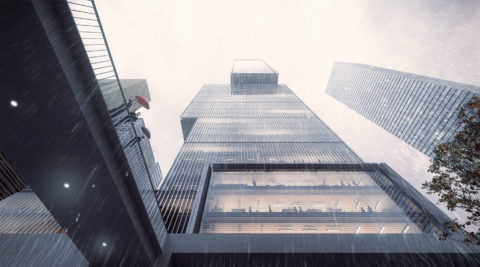
Zhangjiang Science City
Architecture is fundamentally the art of spaces. For the core area of Zhangjiang Science City in Shanghai, we aim to deliver spaces for science, spaces for art, and spaces for people. These memorable spaces are at the crux of what makes a city iconic.
The project is surround with fantastic natural assets such as the planned Central Park in the middle, Xiao Zhangjiabang River to the east, and the wetland park to the south. Infrastructure wise, Zhongke Road to the north offers both great vehicular access above and a subway connection below while Lechuan Road and its tunnel define the north south thoroughfare crossing under Chuanyang River. Taking these site conditions into consideration, the final design effortlessly organizes the five towers into an open and integrated network of urban gardens. The major street edges south of Zhongke Road, west of Lechuan Road, east of the Central Park, and west of Xiao Zhangjiabang River are all thoughtfully lined with public programs such as restaurants, cafes, and city services that make walking along these streets a pleasure.
Being urban does not mean being away from nature. Taking full advantage of adjacent green and water resources, the design employs one consistent language for architecture and landscape. A series of gardens at the ground plane and atop roofs connect people to nature while elevating the wellness of all.
As the critical piece of the Zhangjiang Science City, our design celebrates and expresses the science of architecture by exposing the inner workings of a skyscraper and by expressing the various programs through a series of sheared volumes.
The next generation scientists work collaboratively. The cutting edge of research and development is team work. We believe architecture should respond to the ever-changing nature of its users by maintaining maximum flexibility and connectivity. In the three commercial towers proposed, we worked with our structural engineer Thorton Tomasetti to create a series of atrium spaces throughout the building while making the rest of the floor plate one large plane for productivity.
{to add diagram} These four-story spaces extend the fabric of the urban spaces into a vertical campus for collaboration and innovation. At the same time, the curtain wall enclosing these atria become the perfect opportunity to utilize LED embedded scrims. As these large glazed facades gaze out at various directions by day, they turn into colossal urban television screens by night to showcase the next milestone of scientific creation.
详情
- 项目地点
- Shanghai, China
- 项目规模
- 2,131,255 GSF / 198,000 GSM
- 功能
- R&D Office, Laboratories, Residential, Retail
团队
- Ennead 团队
- Peter Schubert, Kevin McClurkan, Grace Chen 陈昕昉, Jazzy Li 李樾祺, Judy Glina, Neil Yuan 袁正清, Junxin Chen, Anders Evenson, Oliver Li 李憬君, Chao Wei, Charles Wong 黄泽修, Jackie Zhou 周朝晖




















